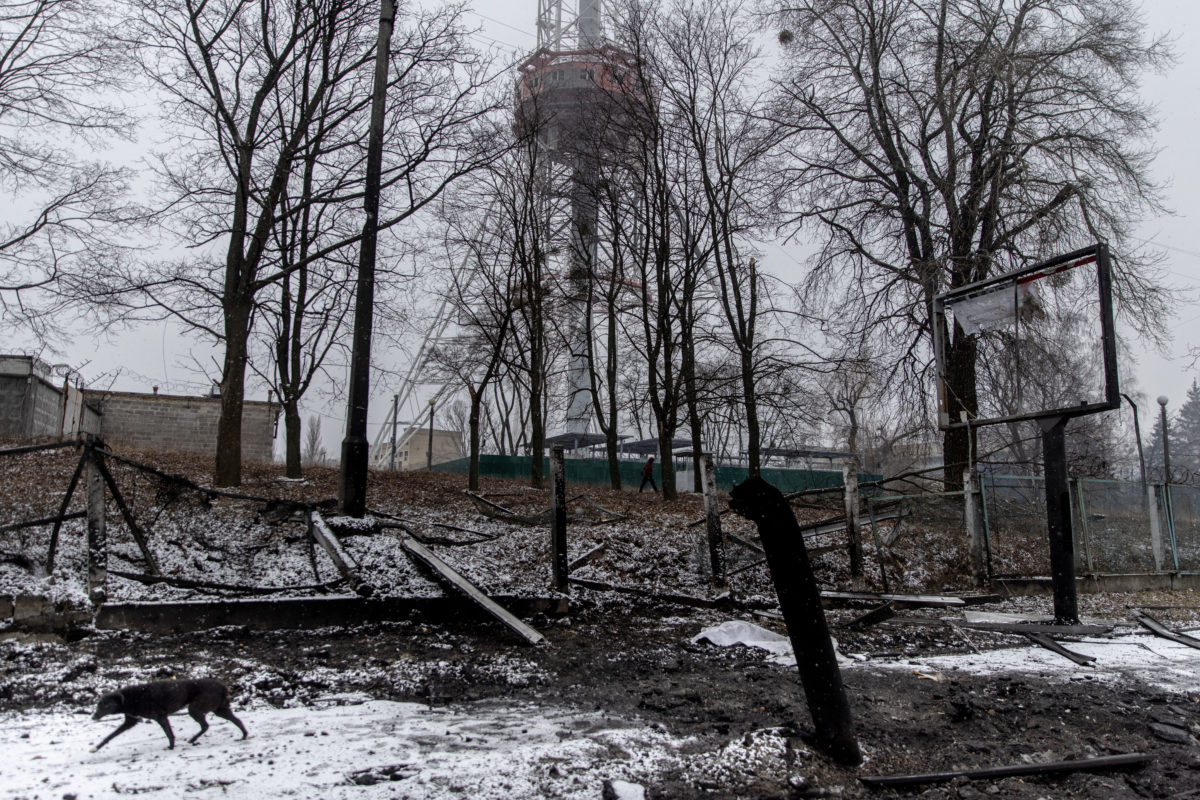For Ukrainians, Babyn Yar—the site of a horrific massacre of Jews during World War II—carries particularly somber weight.
On Tuesday, amid the Russian invasion of Ukraine and a growing humanitarian crisis, an enemy missile struck a TV tower in the nation’s capital of Kyiv, killing at least five people and injuring five others, Ukrainian emergency authorities reported.
But Ukrainian President Volodymyr Zelensky went further, claiming on Twitter that in addition to the TV tower, the missile hit the nearby World War II Babyn Yar Holocaust memorial—built just last year under controversy.
According to the Washington Post, the extent of the damage is not immediately clear: “Israeli journalist Ron Ben Yishai, a veteran war correspondent, visited the site after Tuesday’s attack and reported Wednesday that the recently opened memorial did not appear to have been hit. He reported that the closest damage was to [a] TV tower complex less than 1,000 feet away.”
Casualties and infrastructure damage have been difficult to independently verify.
Prior to the Sept. 19, 1941 German invasion of Kyiv, some 160,000 Jews—20 percent of the city’s population—lived in the metropolis.
Just 10 days later at Babyn Yar, a forested ravine on the outskirts of Kyiv, SS and German police units marched thousands of Jewish civilians to their deaths. Under the guidance of Einsatzgruppe C death squads and detachments from Sonderkommando 4a—concentration camp prisoner work teams—33,771 Jewish civilians were massacred in just two days.
It was, according to the United States Holocaust Memorial Museum, a mass killing at an individual location on a scale exceeded only by “the massacre of 50,000 Jews at Odessa by German and Romanian units in October 1941 and by the two-day shooting operation dubbed Harvest Festival in early November 1943, which claimed 42,000-43,000 Jewish victims.”
Ultimately, more than 100,000 Jews, Roma, and Soviet political prisoners were murdered at Babyn Yar over the course of the war.
Today, the plunging, forested landscape is a popular local hangout where pedestrians may walk freely—with little indication that they tread on ground once soaked in blood.
Previously, only a “chaotic field of memorials to various groups of victims—Jews, Roma, Ukrainian nationalists, and priests—has been erected in one section of the park, on the side of the highway furthest from the actual site of the murders,” writes The Atlantic.
Unlike other countries in Europe and around the world that erected somber memorials to those lost in the Holocaust, resource-strapped Ukraine had been unable to construct its own major memorial until 2021.
Somewhat ironically, the memorial is headed by a Russian, filmmaker Ilya Khrzhanovsky, who is known for his controversial immersive project “DAU.”
Premiering in 2019, Khrzhanovsky’s 13 feature-length films that comprise the “DAU” were met with great skepticism by critics who saw little artistic merit in some of his more graphic work. One film, for example, featured two mentally challenged men who spent the majority of the time fondling each other, naked. Another film led to a criminal investigation in Ukraine into whether orphaned infants were abused during production. Khrzhanovsky has denied that abuse took place.
In recent years, the construction of the somber memorial at Babyn Yar has drawn public ire, with critics such as Dieter Bogner, an Austrian art historian and leading museum design specialist, charging that the “core exhibit dangerously approaches the impression of a Holocaust Disney.”
Regardless, Babyn Yar stands as a perilous reminder of horrors past, even as the complications of modern political rivalries coupled with feuding visions and disputes fuels the deadly Russian invasion.
“To the world: what is the point of saying ‘never again’ for 80 years, if the world stays silent when a bomb drops on the same site of Babyn Yar? At least 5 killed. History repeating …” Zelensky tweeted.





